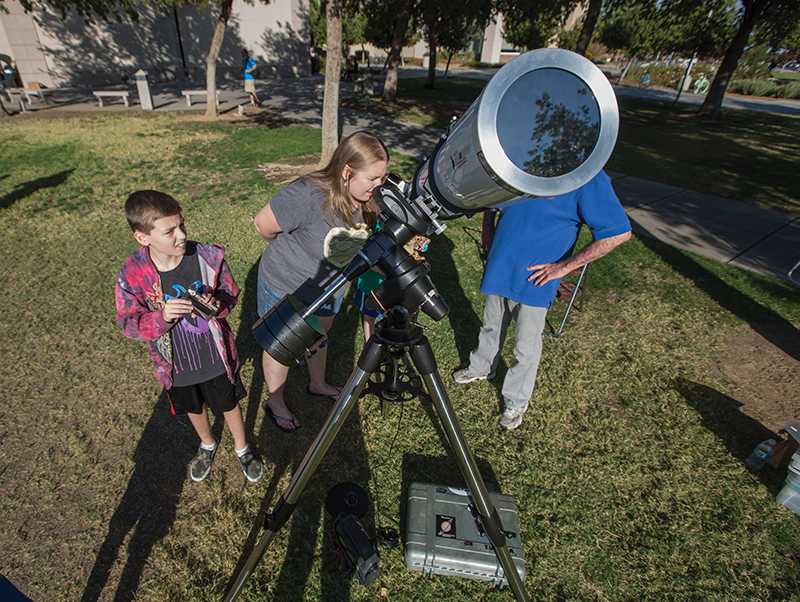
The Fresno State community was treated to a stellar experience Thursday as the Central Valley Astronomers held a solar-eclipse viewing event outside the campus’ Downing Planetarium.
Equipping onlookers with telescopes, pinhole cameras and tinted film, which allowed them to view the eclipse, the group used the event to raise public interest and knowledge about astronomy.
“I think the best thing is seeing how excited people get. I’ve seen a lot of eclipses, but it’s always fun to show the kids all that,” said Dr. Steven White, the director of the planetarium and a Fresno State physics professor.
The partial-solar eclipse, which occurs when the view of the sun from earth is somewhat obscured by the moon, began at 1:58 p.m. and reached peak visibility at 3:22 p.m.
Simon Gonzalez, a Fresno State graduate student studying physics, took the opportunity to take pictures of the eclipse utilizi
ng a computer hooked up to a telescope.
“Unfortunately here in Fresno, the moon didn’t get to obscure that much of the sun. Only about 38.2 percent of the sun got blocked,” Gonzalez said.
However, he said he looks forward to a full-solar eclipse, an incredibly rare phenomenon, viewable from the continental United States in 2017.
Prior the eclipse, the astronomers also hosted two programs, “Moonbound: 2020” and “Two Small Pieces of Glass,” that educated attendees on the future of space flight and telescopes.





